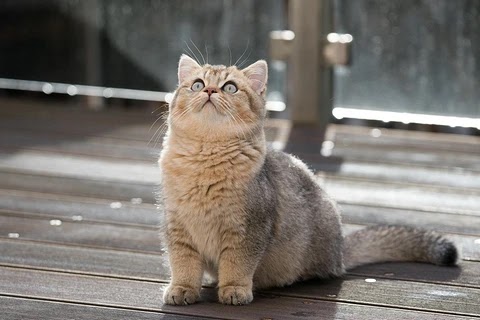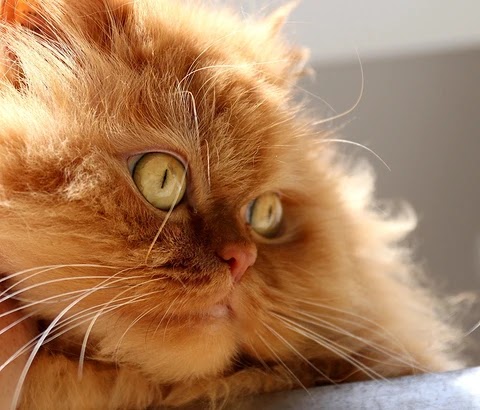Just like in humans, being overweight can lead to a variety of health problems in cats: diabetes, joint problems, and heart disease.
1. Maine Coon
Maine Coons are large cats with a stocky build. This is one of the largest breeds of domestic cats, males weigh on average from 6 to 8 kg, and females from 4 to 7 kg. They have an excellent appetite and are addicted to food, which can lead to overeating if left unchecked.
2. British Shorthair
The British Shorthair cat has a slow metabolism compared to other breeds. They are known for their love of doing nothing and calm nature. They have a stocky build and a round face, which can make them appear plump at a healthy weight. But they get fat if food intake and portion size are not controlled.
3. Scottish lop-eared
The Scottish Fold is a unique breed known for its floppy ears and round muzzle. They have an affectionate and calm nature, which makes them less active than other breeds. Combined with their tendency to overeat, they may be at risk of gaining excess weight.
4. ragdoll
The Ragdoll is a gentle and affectionate breed with a relaxed and laid-back demeanor. These are large cats with plush fur and strong bodies. They are less active compared to other breeds and have a slow metabolism. Ragdolls are prone to overeating, especially if they are offered too many treats.
5. Persian
Persian cats are known for their luxurious coat, flat muzzle and round body. They are not very active. Persians have a sensitive digestive system, which leads to trouble if their diet is not properly controlled. And because of a sedentary lifestyle, they easily gain weight and face problems associated with obesity.
6. Siamese
Siamese cats are slender with large ears and bright blue eyes. It is an active and breed that requires mental and physical stimulation for good health.Siamese cats can overeat if food is always available.The combination of high energy levels and large appetites can put Siamese cats at risk of obesity.







0 Comments